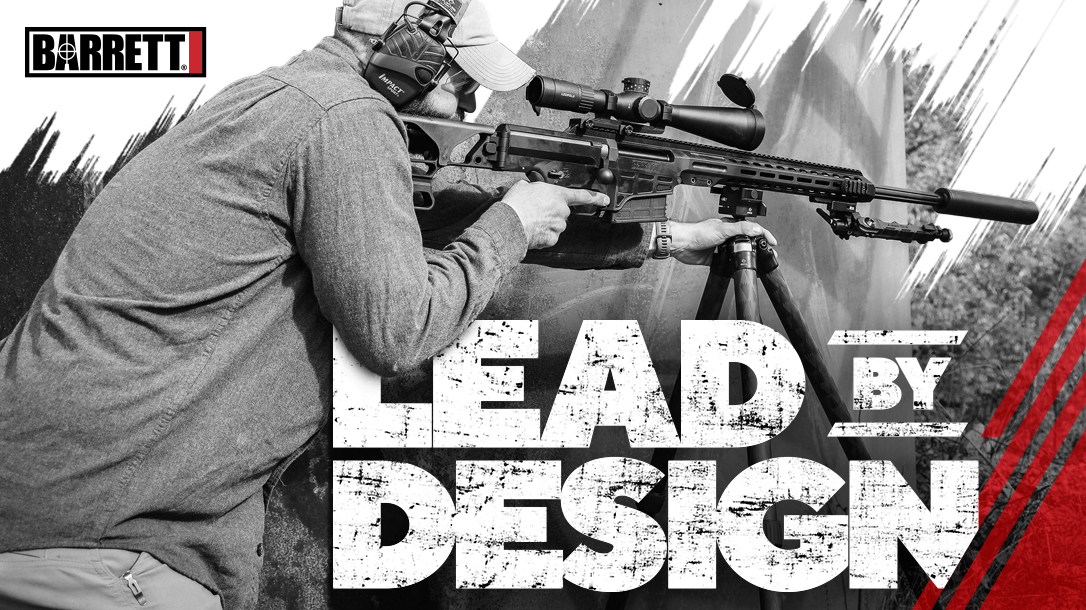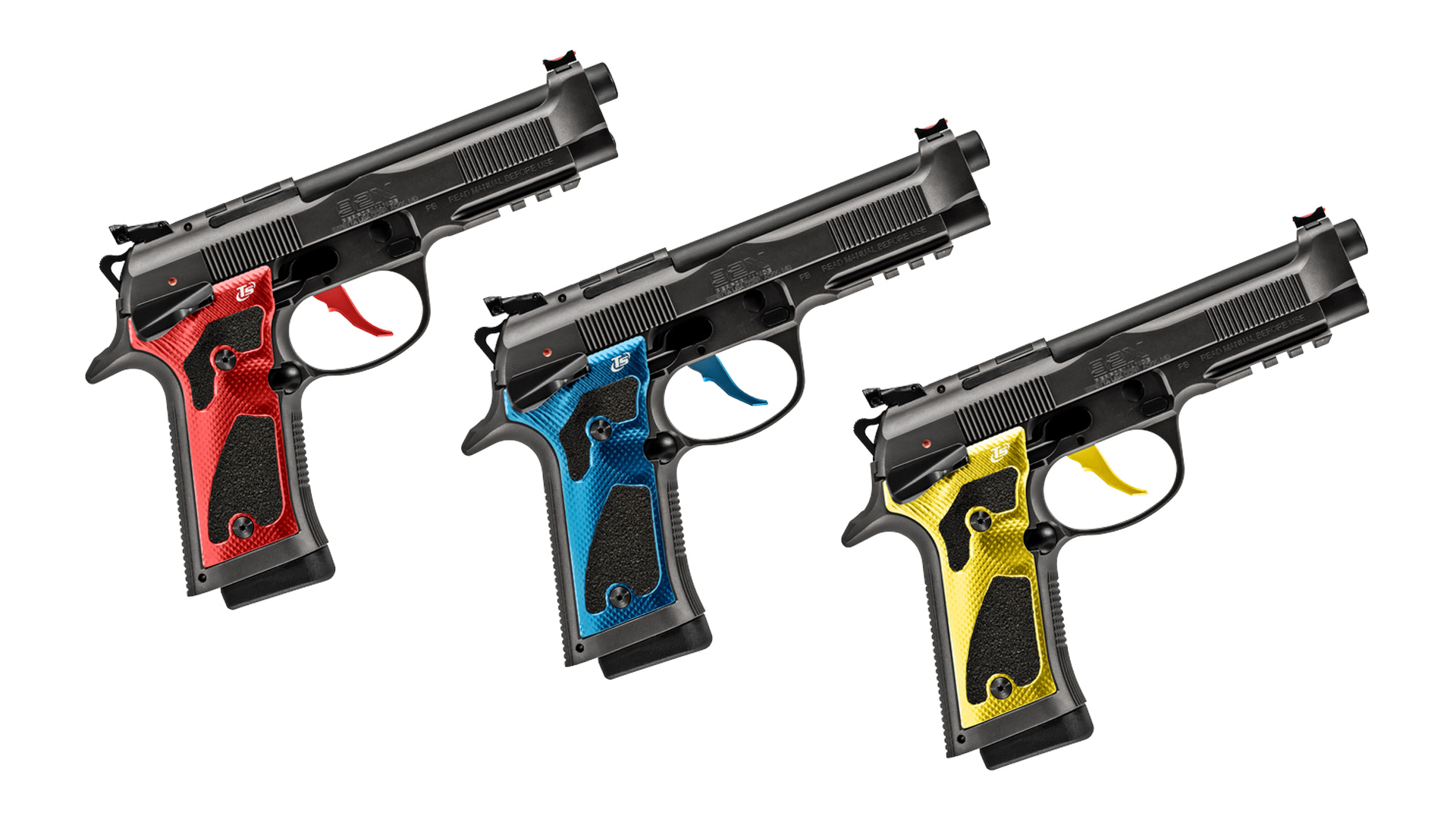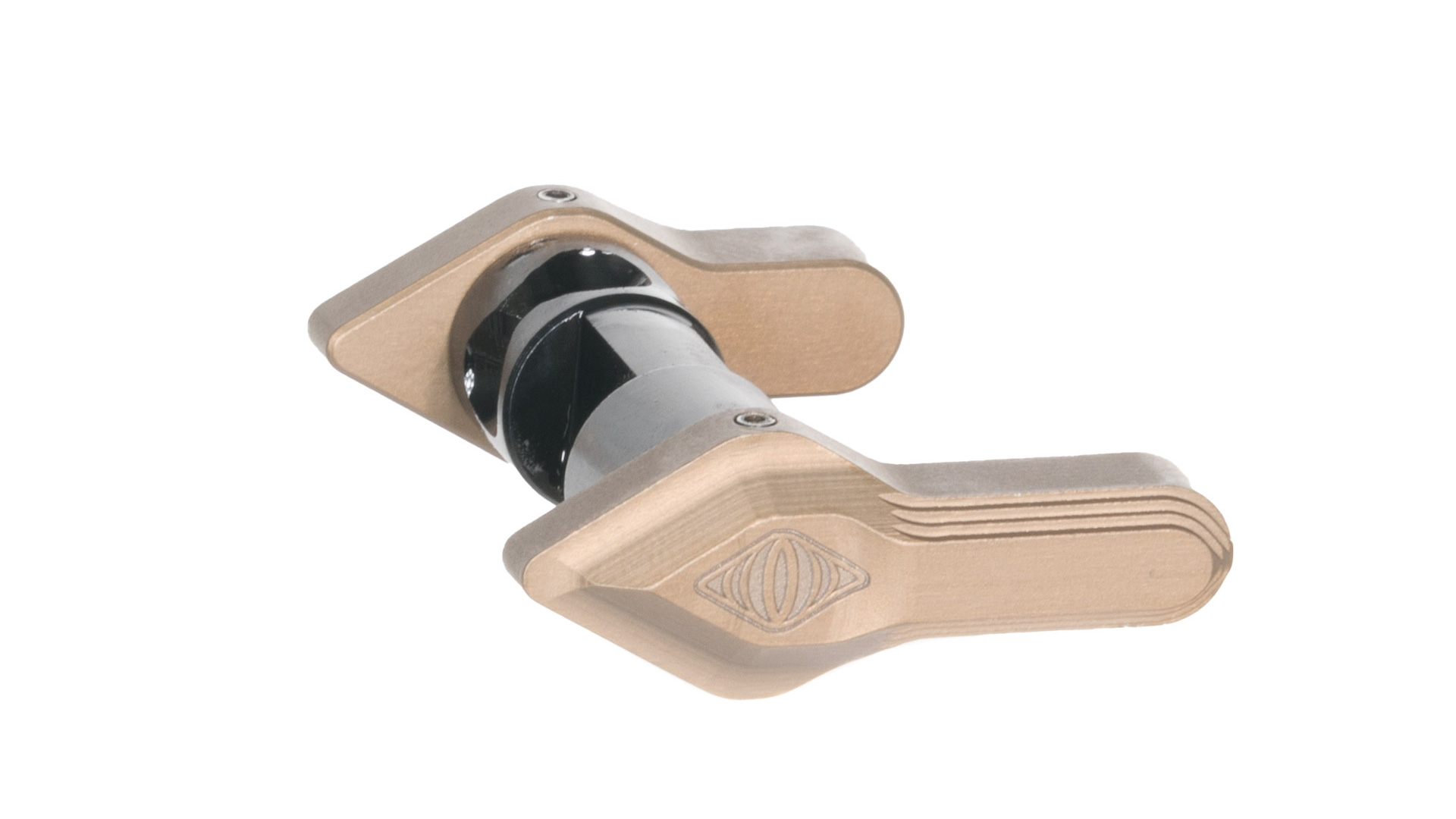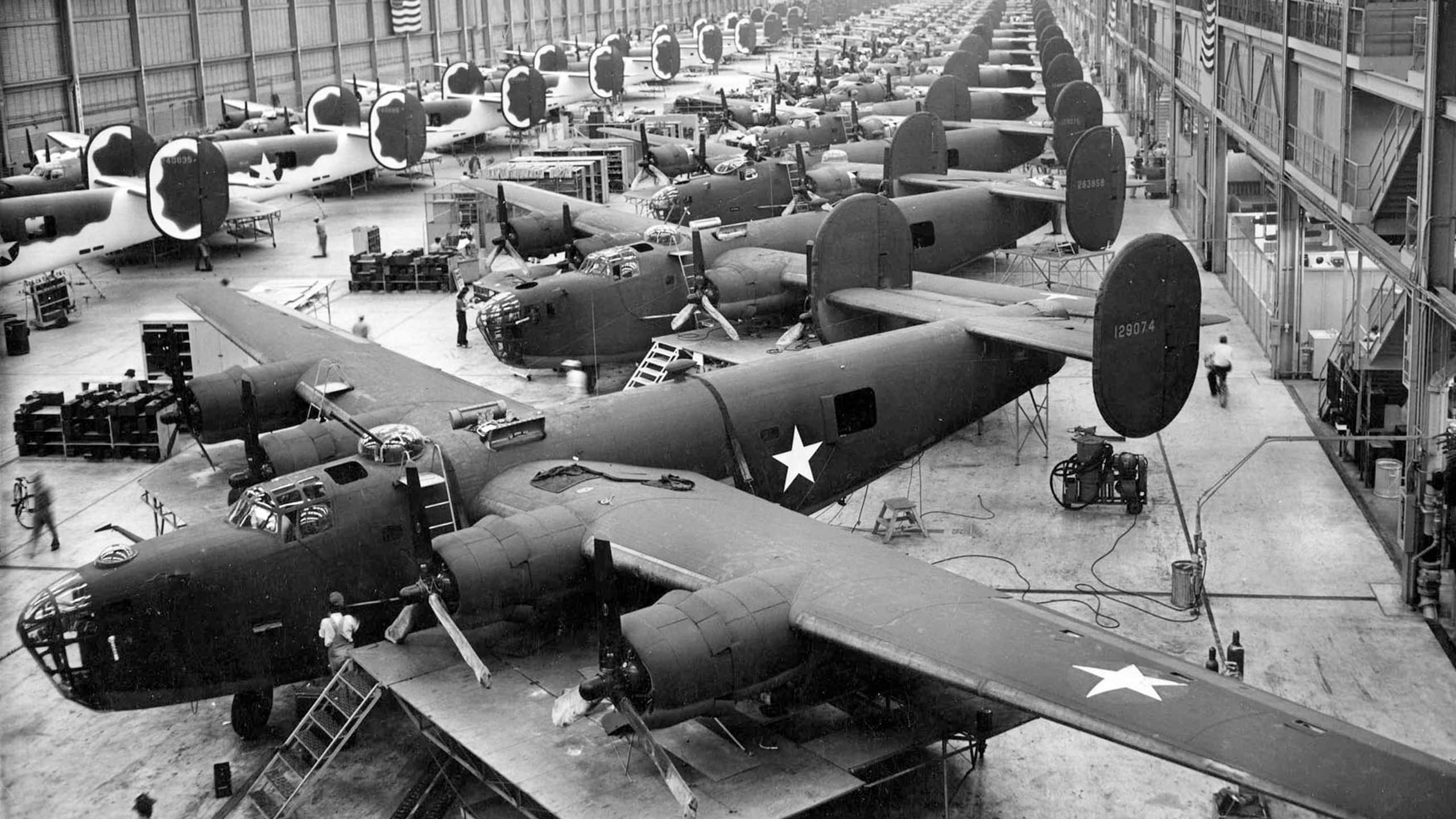American Tanks on D-Day’s Beaches
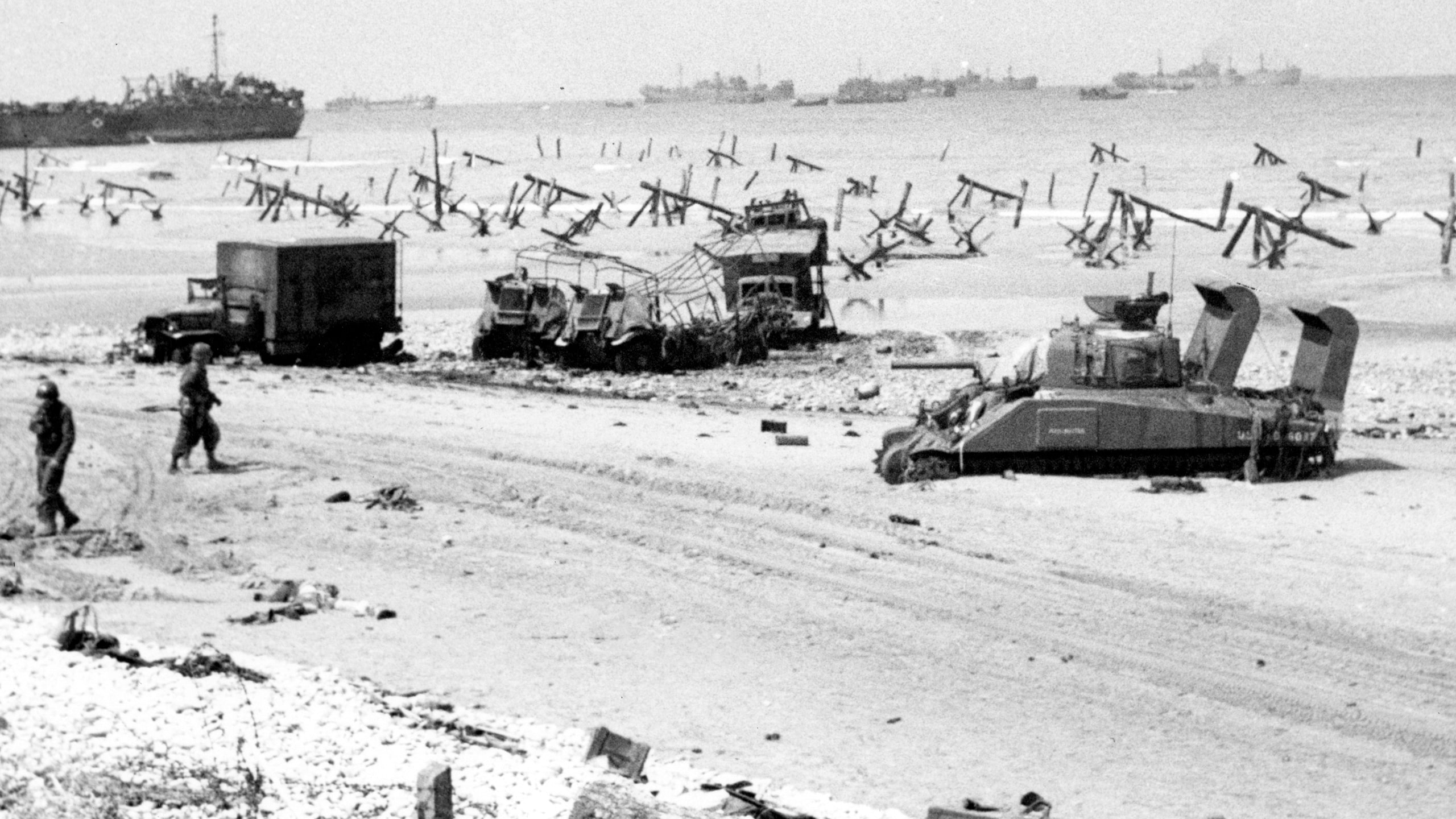
World War II is the most analyzed conflict in modern times. Despite all the excellent works available, pop culture has in some cases surpassed the historical records and have become established as fact in movies, TV and YouTube.
The use of Duplex Drive (DD) tanks on D-Day is just one example of a pervasive myth of their supposed demise. This line of thinking ignores what actually happened that day. For example, in “Saving Private Ryan”, the character of Capt. Miller at Omaha Beach said that all the DD tanks were floundering in the Channel. This was incorrect. Five DD Shermans landed at Dog Green Sector to support the 2nd Rangers and the 29th Infantry Division.
One of the neglected stories of Operation Nepture, better known as D-Day, is the legendary exploits of the seaborne assault by the Duplex Drive equipped 70th Tank Battalion supporting the landings of the 4th Infantry Division at Utah Beach. The operation was one where detailed preparation, sound decision-making, leadership, combined arms and, of course, a good amount of luck is what led to the “easy victory.”
Genesis of the DD Tank
While the Navy and Marines had been using lightly armored amphibious tractors (officially known as LAnding Vehicle, Tracked but unofficially known as the Amtrac) and “Amtanks” in the Pacific, the Normandy beaches presented some unique challenges that precluded using the lightly armored Amtanks with low-velocity howitzers, even if they could be spared by the forces in the Pacific.
Gen. Bernard Montgomery, who had been appointed as the commander of all ground forces for the invasion, was pushing for a significant increase in the combat power of the assault forces. From the British point of view, there was a very painful series of lessons learned from the disastrous raid at Dieppe in 1942, which motivated the development of DD tanks.

The raid on the French coast showed that an amphibious assault against Hitler’s Atlantic Wall was not the same as previous landing operations in North Africa, Sicily and Italy. The classic approach of having infantry and engineers go ashore first to clear the way for armor and other supporting arms was asking for a pounding against modern coastal defenses of the Atlantic Wall, with obstacles, gun casements, sea walls, minefields, and fortified towns overlooking the beach. On top of these defenses, artillery was positioned inland to fire on the beach landings. This led to the conclusion that it was necessary to have medium tanks on the beach before or accompanying the infantry as it came ashore, especially since the Germans had two years since Dieppe to improve their defenses.
Development
The inventor of the DD tank was a Hungarian engineer by the name of Nicholas Straussler, but the combat development effort fell to Major General Sir Percy Hobart. Since 1943, he had already developed several modified vehicles, such as flail tanks to clear minefields, bridging tanks, and flamethrower tanks, which were given the overall name of Assault Vehicles Royal Engineers (AVRE), or popularly called Hobart’s Funnies.
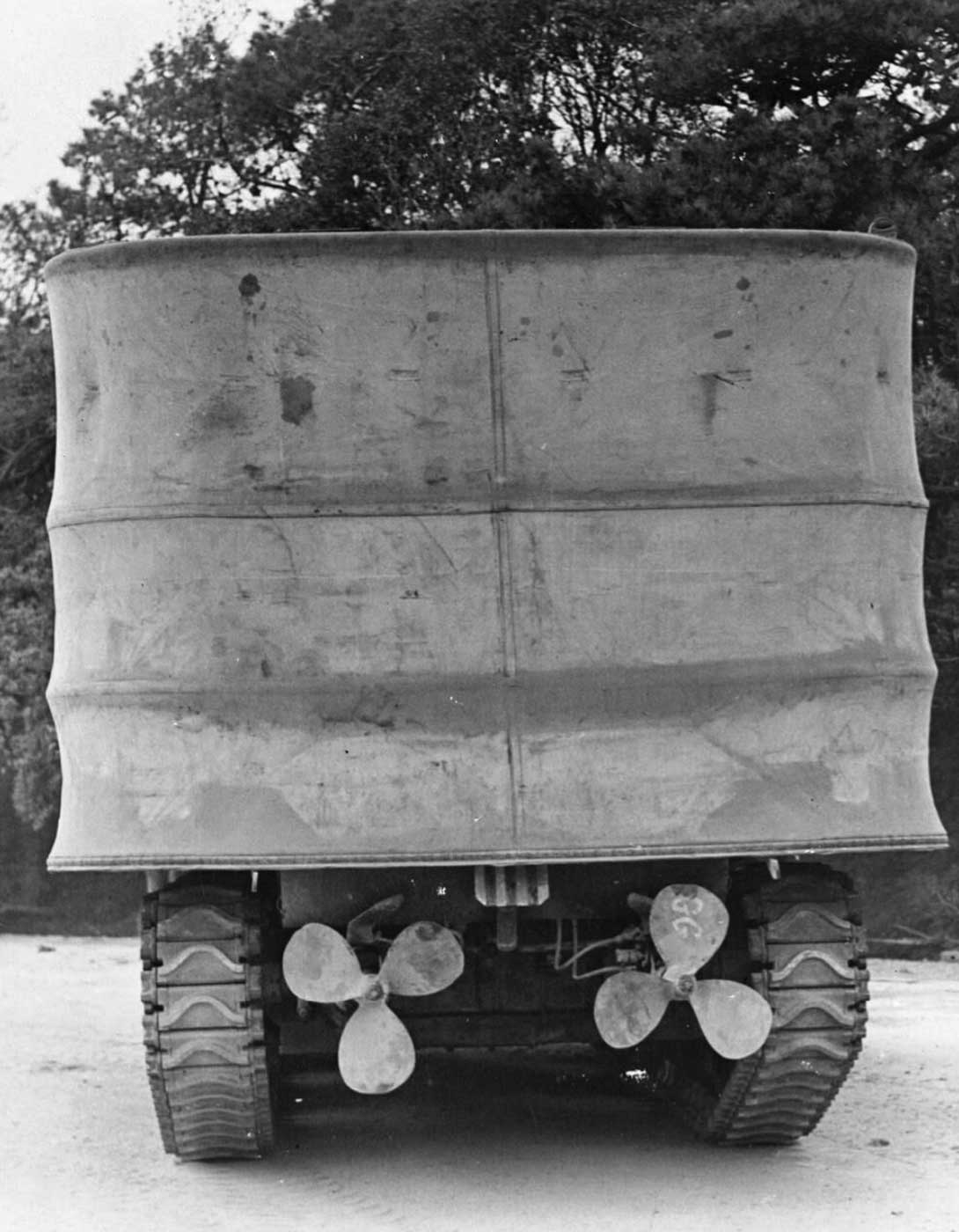
Hobart had successfully sold the idea of DD tanks to the War Office despite opposition by the Royal Navy, which thought that they would never be seaworthy and could not be launched from landing craft. Paradoxically, the naval experts also felt that precious landing craft should not be risked to a direct beach landing until it was clear and enemy coastal artillery was silenced, thereby again placing the onus on infantry and engineers with naval gunfire support to accomplish this against the highly fortified Atlantic Wall.
In 1943, an order was placed to the British Ministry of Supply (MoS) for 900 Sherman DD conversions. The MoS was reluctant to divert scarce production resources for the conversions, especially when the entire effort was opposed by the Royal Navy. Output was minimal, and Hobart doubted they would even have enough for D-Day.

Then fate stepped in in the form of Gen. Dwight D. Eisenhower. On January 27th, 1944, Ike viewed a demonstration of the DD tank and was so impressed that he ordered a British engineer by air to Washington. Within a week, U.S. factories kicked into high gear to tackle the project. In two months, 300 Shermans had been converted and were on their way to England.
The DD vehicles relied on an inflatable and braced flotation barrier to get the necessary water displacement and a propeller drive to move through water rather than the movement of tracks like on an Amtrac. The DD could move at about four knots on the water and, upon reaching shore, would lower the barrier and fight as normal.
The boat chosen for carrying the DD Shermans was the Landing Craft Tank or LCT. British LCTs were chosen because they had a greater capacity than U.S. LCTs. The British LCTs could carry nine Shermans or a mix of tanks and wheeled vehicles. The LCT had a bow ramp that could disembark the DDs at sea or on the beach.
It must be remembered that landing craft were at a premium and, to get the increased ground force that Monty wanted, it required that landing craft be diverted from Operation Anvil in Southern France to Operation Neptune. Therefore, launching vehicles further from the shoreline was preferable to running in and beaching under the fire of German coastal batteries and other shore defenses.
The 70th Tank Battalion
Planners early on recognized the importance of Utah Beach, since it was necessary to land forces there to seize the Cotentin Peninsula and secure the vital port of Cherbourg. For Operation Neptune, Utah Beach was assigned to the 4th Infantry Division, which had not seen combat. Nevertheless, it had couple of things going for it.
Firstly, it was commanded by a no-nonsense general by the name of Maj. Gen. Raymond Barton and his hard-driving Assistant Division Commander, Brig. Gen. Teddy Roosevelt, Jr. Secondly, the division had the 70th Tank Battalion attached, commanded by Lt. Col. John C. Welborn. It was one of the most combat-experienced tank units in the ETO, having fought in North Africa and Sicily. Roosevelt had worked with the 70th in previous campaigns and specifically requested the unit be attached to the 4th Infantry Division for the D-Day landing.

The battalion was one of many independent tank battalions fighting in Europe. That is, it was a separate battalion not part of an armored division organization. Typically, they were attached to an infantry division to provide armored combat power without reallocating tank battalions from an armored division.
The unit was organized with three medium tank companies with M4A1 (75mm gun) Shermans and one light tank company of M5A1 Stuarts. Companies A and B were DD equipped, while C Company Shermans were configured as deep waders. C Company also had four deep-wading Sherman dozer tanks. The battalion was supposed to have an assault gun/fire support battery of six Shermans equipped with 105mm howitzers, but none were available. Instead, the battalion was given six M4A3 late-model 75mm gun Shermans.

The battalion’s training prior to the invasion was typical for units conducting an amphibious assault. There were embarkation drills, landing rehearsals and vehicle preparation. The tankers of the 70th went the extra mile, however. The DD crews not only trained on how to set up and swim the tanks, but on their own initiative reinforced the flotation barriers.
Their combat experience also meant they understood that timely re-supply was not guaranteed in the initial stages of an amphibious operation, so they fabricated additional ammunition racks in their Shermans. When the 70th went into action at Utah Beach, each Sherman had 50 rounds of main gun ammunition over and above their standard load.
Terrain at Utah
The beach itself was gently sloping and, in contrast to the other Allied beaches, faced east rather than north. However, the German defenses were formidable. Along the sea wall, it consisted of pillboxes, forts, tank turrets mounted on concrete structures, Tobruk Pits (concrete-lined foxholes), firing trenches, Belgian Gates (mobile heavy steel antitank obstacles), and underground shelters. These emplacements were connected by a network of trenches and protected by wire, mines and anti-tank ditches.

Unique to Utah Beach, immediately behind these defenses were flooded areas negotiable only by moving along four narrow causeways, or, if necessary, the DD Shermans had the capability to swim these areas. Also, fortified towns sat astride the entrances to the causeways. The 101st Airborne Division was to clear the way for the seaborne assault by seizing the western exits of these causeways. Once beyond the exits, there were the infamous hedgerows. Amazingly, the soldiers had not been warned about these 8- to 10-foot-high obstacles prior to the invasion.
The Enemy
Intelligence estimated that the Cotentin Peninsula was defended by two infantry divisions, the 709th and the 243rd. Also, the coastal defense units themselves had likely been reinforced to bring them up to strength to the level of field divisions both in terms of personnel and equipment. It was thought that German forces were capable of counterattacking on D-Day at Utah with a maximum of four battalions and one combined arms battalion-sized kampfgruppe.

Of concern was the enemy tactical panzer reserves held behind the beaches, specifically the 21st Panzer and the 12th SS Panzer (Hitler Jugend), which were positioned in the British and Canadian sectors but could move to other sectors if not engaged fully on those beaches.
Additionally, a coordinated counterattack on Utah with operational panzer reserves from outside the Cotentin Peninsula could occur at any time after D plus 2 days. This was why a days-long naval bombardment was axed since it would have given the enemy a clearer picture of where to commit his reserves.
The Assault
At about 0230 the 6th of June, the Bayfield, headquarters ship for Task Force “U”, anchored in its assigned berth while control vessels took their stations. H-hour was to be 0630. Troops were transferred to their landing craft and awaited orders to move to their rendezvous areas. Then, at 0550, the naval bombardment group opened fire on enemy shore batteries.
In contrast to air support at Omaha Beach, where high altitude heavy bombers dropped their bombs too far inland as a safety factor, at Utah, 276 B-26 Marauder medium bombers swooped in under cloud cover and made their first strike on the beach defenses. The combined naval gunfire support and the airstrike succeeded in silencing most of the coastal batteries.

Then Murphy’s Law struck. As the beach control vessels left the transport area, one had a screw fouled and could not move to the beach. This delay, coupled with the silencing of most of the German coastal defense batteries, presented the task force commander an opportunity to make up time by launching the DD tanks from less than two miles out instead of the planned four miles. This also placed the LCTs in calmer waters to launch the Shermans.
On the movement in, one LCT hit a mine and sank, taking with it four Shermans and the crews. Despite this, the other DDs were launched and pressed on, hoping to make up time and reach the beach at H-Hour. The landing craft carrying 2nd Battalion, 8th Infantry dropped their ramps at exactly H-Hour. The infantry had to wade to the shore in waist-deep water for 100 yards, and even though the tanks were a few minutes late, 28 DD Shermans of A and B Company caught up with the infantry as they walked on to the beach.
A Company, 70th Tank Battalion, commanded by 1st Lt. De Witt C. Fair landed with 1st Bn, 8th Infantry directly in front of the fortifications at La Madeline. B Company, commanded by 1st Lt. Frances E. Sanger, landed with 2d Bn, 8th Infantry about 1300 yards southeast of La Madeline where it also faced fortifications.

These defensive positions were covering the entrances to the causeway roads and had to be reduced before units could move off the beach. Ad hoc tank-infantry teams proceeded to reduce enemy fortifications and small groups were organized to clear buildings and a series of villages which ran parallel to the beach.
At H +15 minutes, C Company, commanded by 1st Lt. John Ahearn, disembarked directly into the surf with deep-wading Shermans. He immediately attached his dozer tanks to the engineer group, which brought the group’s dozer tank strength to eight. The Shermans pushed obstacles out of the way so follow-on waves would have a clear path on the beaches. Those obstacles that dozers couldn’t clear were blown by demolition teams. The dozers provided cover to the engineers against German small arms fire and artillery, which landed on the beach routinely most of the day.
Almost immediately, Roosevelt and his troops realized that the initial waves landed 2,000 yards south of the planned landing sites. This was likely due to the loss of a landing control vessel and obscuration of the beach by naval gunfire and air support.

Brig. Gen. Roosevelt ordered the attack to continue from where they landed. He saw that the fortifications and enemy forces were not as strong as where they were originally supposed to land, and this gave the 70th Tank Battalion an opportunity to flank the German defenses positioned further north.
In addition, troops and traffic were starting to stack up on the beach. It was risky, but speed was of the essence, so the tanks were ordered to advance in company columns directly across the causeways rather than to swim across the flooded areas.
Since causeway 3 was covered by German 88mm guns, the companies advanced using the two most southern routes over the flooded areas, that is, causeways 1 and 2. A Company and parts of B and C companies moved on causeway 2 with the 3d Battalion, 8th Infantry and, at about the half-way mark, they encountered a blown culvert covered by an anti-tank gun. The first DD hit a mine, and the second tank was knocked off the road by the anti-tank gun. Finally, the third Sherman came up and destroyed the gun. The remainder easily forded the flooded ditch and exited the causeway and advanced to the area of La Houssaye.
Once they exited the causeways, negotiating the fields and hedgerows became a huge learning exercise in tank-infantry coordination, but where the combat experience of the 70th gave the 4th Division a distinct advantage. Each hedgerow was a natural defensive line, and fighting was from field to field. When the Sherman dozer tanks came up from the beach, they punched through the hedgerows so tanks could move through the gap. Tanks would protect the infantry’s flanks while the infantry would locate dug-in German infantry. The infantry needed the Shermans’ main gun and machine guns to deal with the enemy infantry. Both arms perfected this teamwork as the battle progressed.

Further south, Lt. Ahearn of C Company with part of B Company and the 2nd Battalion, 8th Infantry, moved towards Pouppeville on causeway 1. The units encountered small arms and artillery fire all the way to an enemy strongpoint at Beau Guillot. Intense tank fire from the Shermans forced the enemy to surrender the strongpoint. The tank-infantry team continued to move towards exit 1.
At a road junction near Pouppeville, Lt. Ahearn split his force and had one element proceed directly inland while he took the remainder across the dunes and hedgerows to continue to pursue enemy forces in the area. As his unit was advancing, his tank hit a mine and was immobilized. Disregarding his own safety, he dismounted his tank and reconnoitered forward on foot under enemy fire to find gaps in the hedgerows and to determine enemy strength.
At this point, he heard cries for help from a wounded paratrooper who was about 40 yards into a minefield. Ahearn returned to his tank and retrieved a large first aid kit, found a gap in the hedgerow and tried to pick his way through the minefield. Suddenly, an antipersonnel mine detonated and blew his right leg off below knee and severely mangled his left foot. He yelled for help from his crew, and they rigged a series of ropes to pull both men to safety. Ahearn and the paratrooper were evacuated to an aid station on the beach. 1st Lt. Dwight McKay now assumed command of C Company.
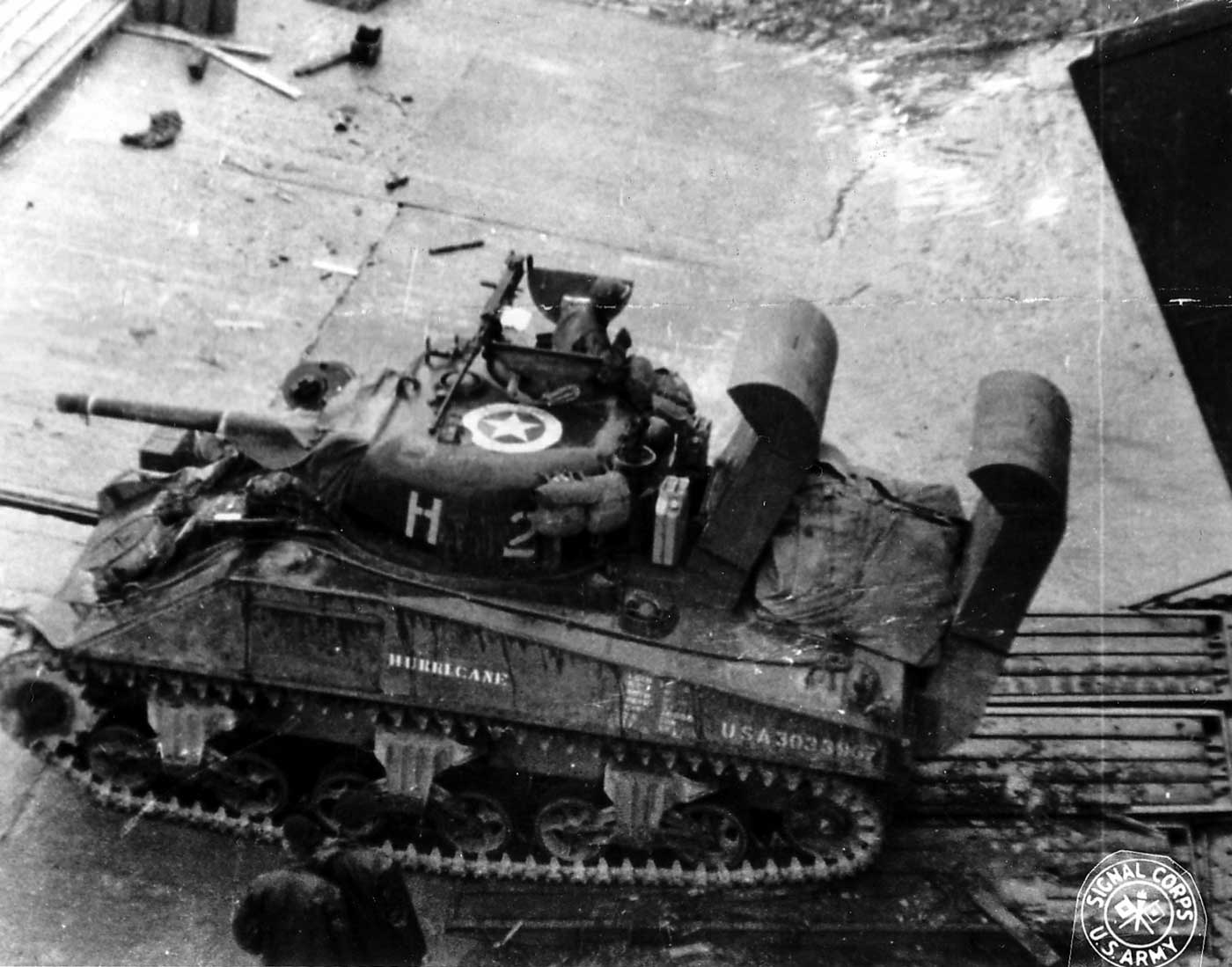
The two forces, which had been split, rejoined northeast of Pouppeville and advanced on the town where they made contact with 3d Battalion, 501st Parachute Infantry. C Company continued to move west towards St. Marie DuMont, where it received anti-tank fire from a church steeple in the town. The Shermans quickly destroyed the gun. D Company, the light tank company, landed later in the day and was attached to the 101st Airborne and it ultimately screened the southern flank of the 4th Division.
One task which needed to be accomplished was to link up with 2d Battalion, 506th Airborne at Le Grand Chemin to coordinate an attack on the German units still occupying the area at Brecourt Manor. Earlier, Easy Company of the 506th had destroyed German guns (as depicted in the series “Band of Brothers”), but enemy units remained. Elements of the 70th linked up with the 506th and led the attack with the paratroopers to finally eliminate enemy resistance in the area.
At some point, the battalion executed a reorganization and refuel operation in the vicinity of La Houssaye. The battalion’s DD tanks de-waterproofed and orders were issued to team up again with their assigned infantry units. A Company swung north and linked up with 1st Battalion, 8th Infantry and headed west. The team pushed on through enemy artillery fire until it hit a German strongpoint in the vicinity of Turqueville. The battalion main body linked up with the 2d and 3d Battalions, 8th Infantry and advanced to Les Forges and encountered an enemy strongpoint north of the town.
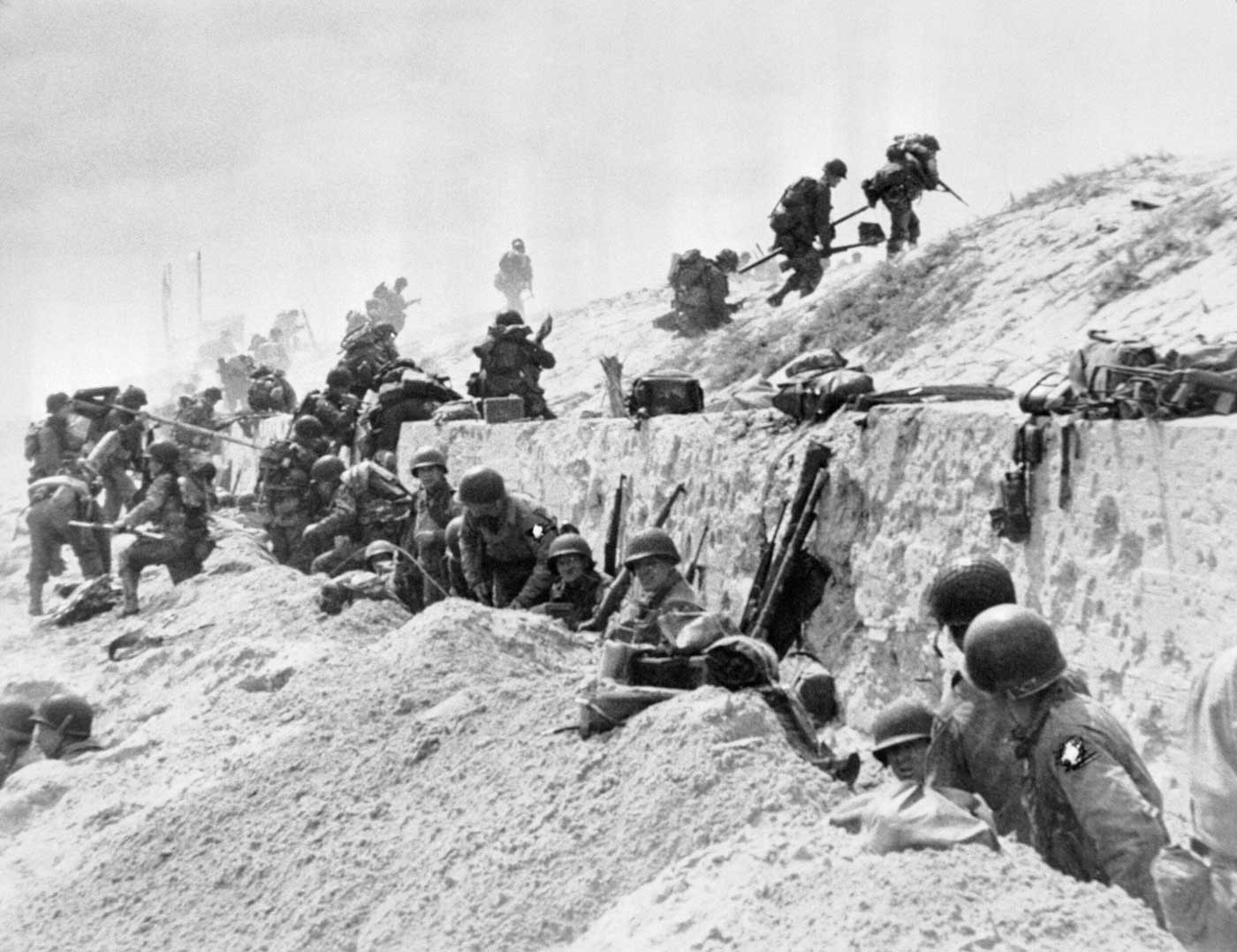
As evening approached, it was clear that Roosevelt’s tactical decisions and the 70th Tank Battalion/8th Infantry team’s aggressive attack resulted in driving the German defenders into a roughly oval defensive pocket along a ridgeline. The tanks and infantry settled into defensive positions for the night in preparation to assault the German pocket the next day.
D-Day Summary
The successful amphibious assault by the 70th Tank Battalion with both DD tanks and deep-wading Shermans enabled the rapid breakthrough of beach defenses and the maneuver inland of the tank/infantry team. It showed that with detailed preparation and proper combined arms and services coordination DD tanks were invaluable in the initial phases of the fight for the beach.
The amphibious task force commander’s decision to adjust for the sea state and the changed conditions on the beach was also instrumental in the success of the DD tanks. The 70th Tank Battalion and the 8th Infantry were the only units of both the 4th Division and the airborne forces to accomplish their assigned D-Day missions on schedule.
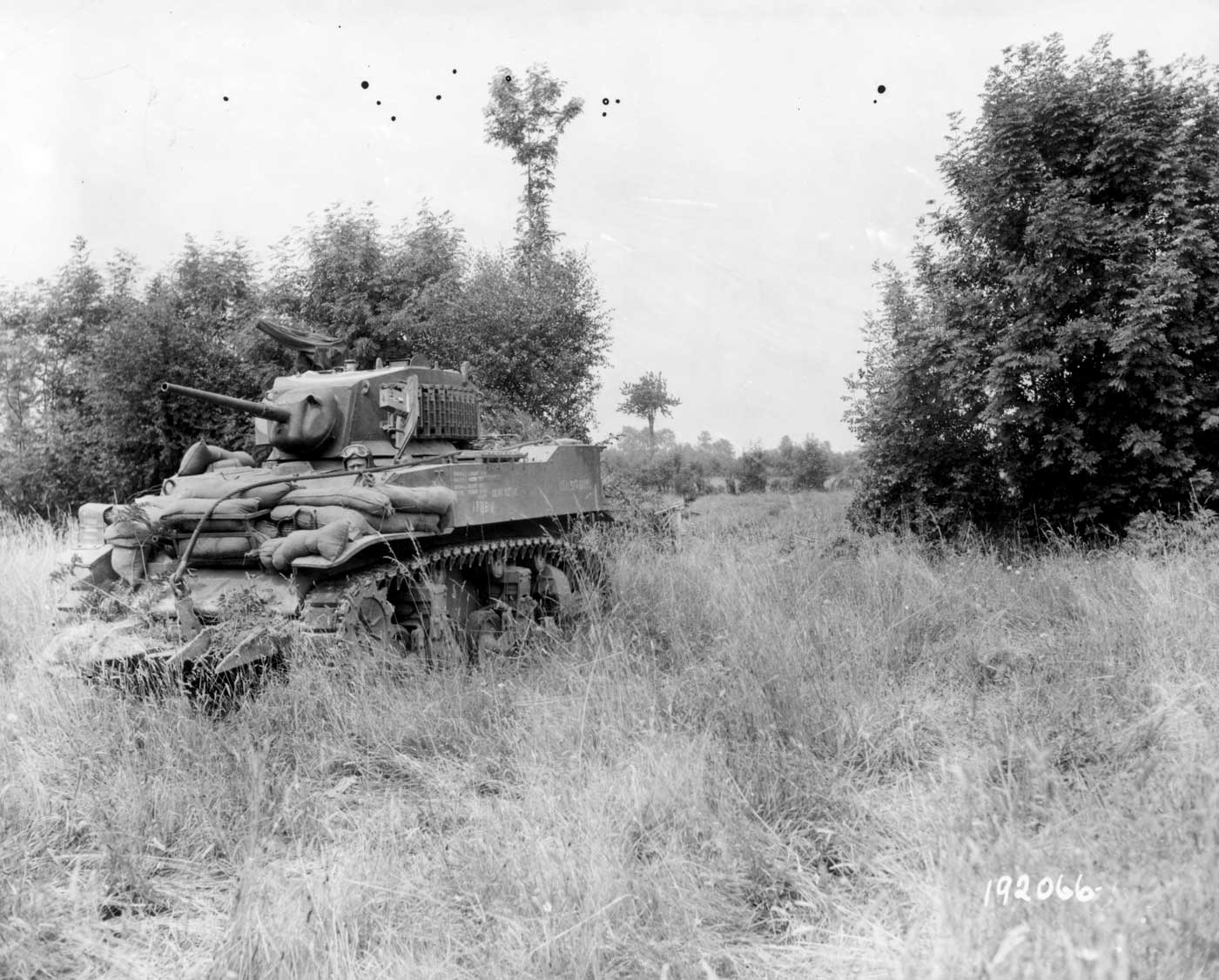
The cost was amazingly low. A total of 17 soldiers were reported MIA; those lost at sea. Three were KIA, and eight were WIA. Material losses were five DD Shermans from A Company, which were lost at sea, and four from the deep-wading C Company that were mired in the surf at the beach. Seven others were lost due to combat on land, for a total of 16 Shermans disabled or lost.
It is difficult to tell how many tanks were recoverable and reparable until reporting channels and maintenance units were established on shore. This occurred on the 14th of June when ETO tank strength reporting showed the battalion had 28 operational Shermans with many reparable in under 24 hours, and four reparable in greater than 24 hours after eight days of sustained combat operations. By the next day, the battalion was showing 52 operational medium tanks thanks to quick recovery and repair. This was due to the superior durability and maintainability of the Sherman tank and the skills of the crews and maintenance personnel.
Epilogue
1st Lt. John Ahearn of C Company, who was severely wounded with a traumatic amputation of his right leg, was evacuated from the beach to London and then to Walter Reed Hospital for further recovery. For his courage under fire and for helping to save the life of a wounded paratrooper at Utah beach, 1st Lt. Ahearn was awarded the Distinguished Service Cross.

Post D-Day, the 70th experienced some of the toughest fighting of the war in its campaign up the Cotentin peninsula to capture the port of Cherbourg, which occurred on June 27, 1944. Two weeks later Brig. Gen. Teddy Roosevelt Jr. was stricken by a heart attack and passed away in his sleep.
He was one of the strongest proponents of the independent tank battalions and was always with the first assault waves in North Africa, Sicily and at Utah Beach. Despite previous clashes with Roosevelt, Lt. Gen. George S. Patton, who was a pallbearer at the funeral, remarked, “he was one of the bravest men I’ve ever known.”
On July 6, the 70th finally was issued six of the assault gun/fire support Shermans with the 105mm howitzer. And on August 11, the battalion received 17 Shermans with the high-velocity 76mm gun, which greatly enhanced the unit’s anti-armor punch. The 70th Tank Battalion fought across Europe until VE day, and in June of 1945, in Rothenburg, Germany, the battalion was awarded the Presidential Unit Citation for its actions on D-Day.

However, its campaigns in WWII were only the beginning of its legacy. Post-WWII, the battalion fought in Korea and, in the early 60s, was designated as the 70th Armor Regiment. Its battalions have served in different divisions and fought in campaigns around the globe. These included Desert Shield/Storm, Operation Enduring Freedom and Operation Iraqi Freedom. From its establishment in 1940 until today, the unit has earned 13 unit awards and 22 campaign streamers and countless personal decorations, making it the most decorated armor unit in U.S. Army history.
Editor’s Note: Please be sure to check out The Armory Life Forum, where you can comment about our daily articles, as well as just talk guns and gear. Click the “Go To Forum Thread” link below to jump in and discuss this article and much more!


